IS ALUMINUM FOIL SAFE FOR COOKING? EVIDENCE-BASED SAFETY REPORT
IS ALUMINUM FOIL SAFE FOR COOKING? A COMPREHENSIVE, EVIDENCE-BASED SAFETY REPORT
Moving Beyond Myth to a Scientific Understanding of Risk
TABLE OF CONTENTS
Establishing the Context: A Risk Assessment Framework for Aluminum Foil in Cooking Material Science Deep Dive: The Chemical Stability of Aluminum Foil in Cooking The Leaching Phenomenon: Quantifying the Risk of Aluminum Foil in Cooking Global Health Standards: The Regulatory Stance on Aluminum Foil in Cooking The Safety Protocol: Best Practices for Using Aluminum Foil in Cooking
1. Establishing the Context: A Risk Assessment Framework for Aluminum Foil in Cooking
Defining the hazard and exposure pathways of aluminum foil in cooking
Branch 1: Hazard Identification The Hazard: Aluminum (Al) element itself. In excessively high doses, aluminum has been studied for potential neurotoxic effects.The Critical Question: Does the amount of aluminum transferred from foil constitute a harmful dose?
Branch 2: Exposure Assessment The Pathway: Aluminum leaching, or migration, from the foil surface into the food.Influencing Factors: Food Type (pH level). Temperature and Cooking Duration. Presence of Salt and Spices.
Branch 3: Dose-Response Assessment Analysis: Examining the established tolerable intake levels for aluminum set by global health organizations like the WHO and EFSA.
The common concerns surrounding aluminum foil in cooking
Concern Profile 1: The Health-Conscious Family. They have read articles online linkingaluminum and Alzheimer's . They worry that roasting fish in foil for their children might contribute to long-term health problems. This concern stems from a lack of quantifiable data.Concern Profile 2: The Professional Chef. They use hundreds of meters of foil a week. Their concern is about consistent safety across all applications, especially when dealing with acidic marinades for meats. They need to know the exact "rules" of safe use to protect their customers and their reputation.Analytical Conclusion: Both groups require a clear, scientific breakdown of the actual, quantifiable risk, not just general reassurances. This is what this report aims to provide.
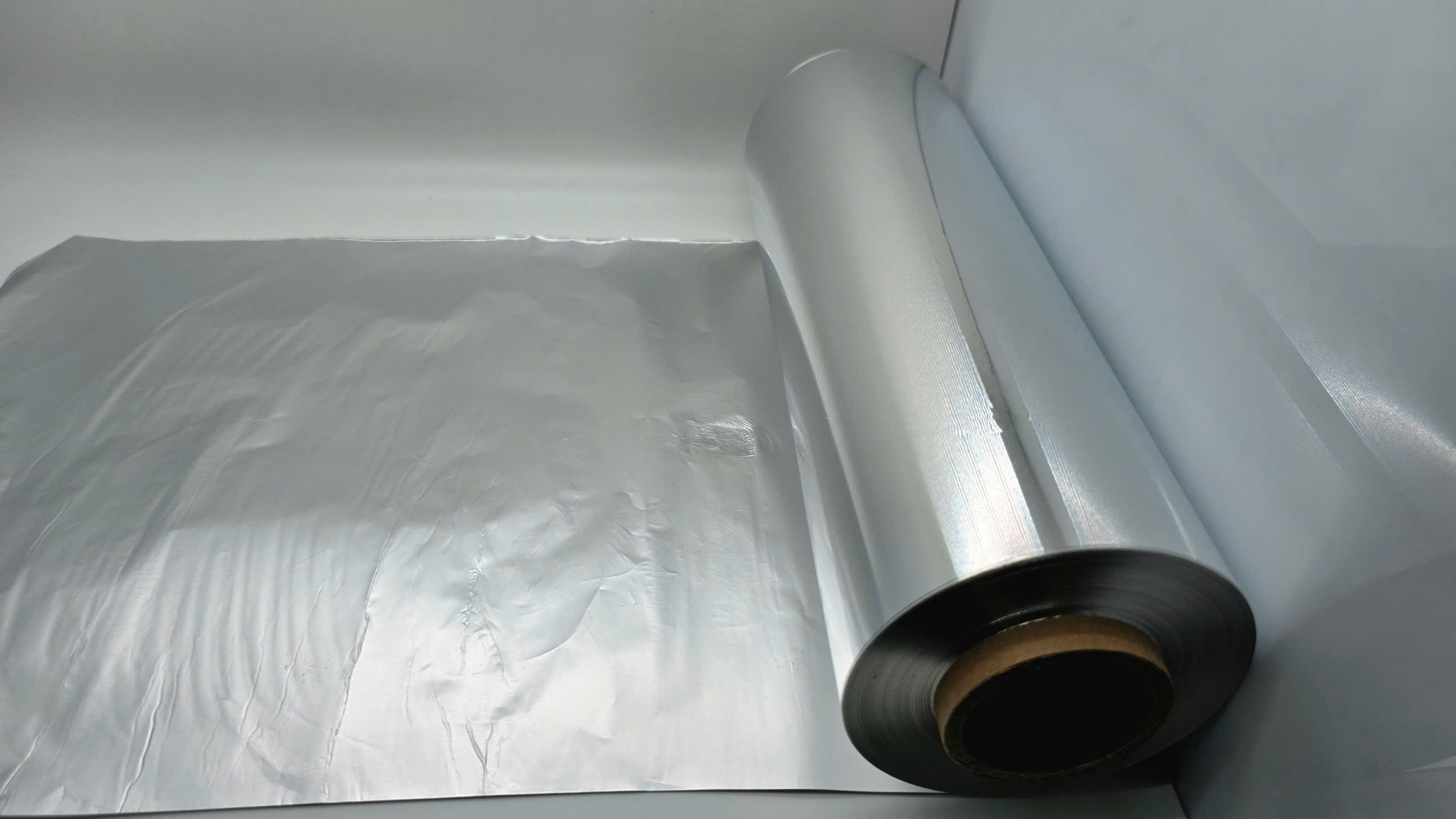
A scientific approach: Analyzing the issue through a professional risk assessment framework.
2. Material Science Deep Dive: The Chemical Stability of Aluminum Foil in Cooking
The composition of food grade aluminum foil
Name: Material Composition SpecificationIcon: 🔬Content: Primary Material: High-Purity Aluminum Alloy (typically >98.5% Al). The answer towhat is aluminum foil made of is a carefully controlled alloy, not just pure aluminum.Key Property: Virgin aluminum is used. This is critical. It guarantees the absence of contaminants from post-consumer recycled sources.Compliance: The material must comply with strict "Food Grade" standards. This limits the concentration of other elements, especially heavy metals, to parts per million (PPM) levels.Product Example: A high-qualityfood grade aluminum foil from a reputable supplier likeLoc Tu is manufactured based on these stringent material specifications.
The protective mechanism of the oxide layer
The Analogy: The surface of aluminum foil works in a very similar, yet even more effective, way.The Mechanism: The instant aluminum is exposed to oxygen, it forms an invisible but extremely tough and non-porous layer of aluminum oxide (Al₂O₃). This layer is chemically passive and self-healing.The Result: This oxide layer acts as a perfect shield. It prevents the underlying aluminum metal from reacting with your food. This is the primary scientific reason that makes thesafe use of aluminum foil possible in the first place.
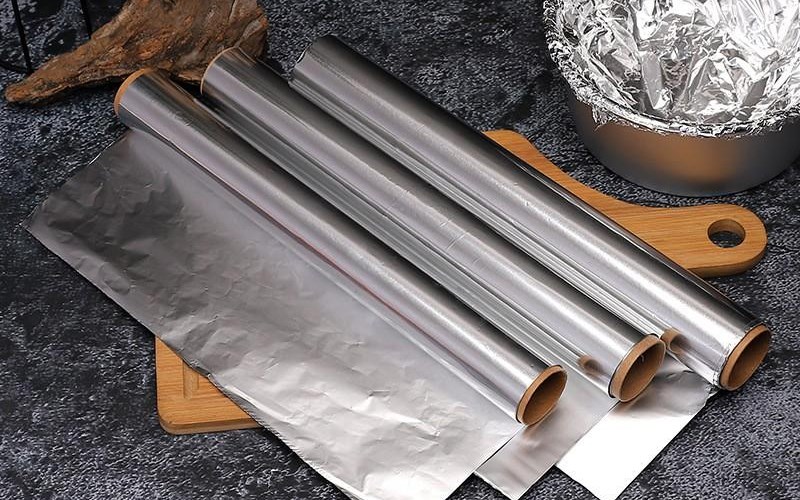
The science of non-reactivity: The self-healing oxide layer is the key to food safety.
3. The Leaching Phenomenon: Quantifying the Risk of Aluminum Foil in Cooking
Factors that influence aluminum leaching into food
1. pH Level of the Food: This is the most significant factor. Highly Acidic Foods (e.g., tomato sauce, lemon juice, vinegar marinades) can partially dissolve the protective oxide layer, increasing leaching.Highly Alkaline Foods (e.g., foods with baking soda) can have a similar effect.
2. Temperature and Duration: Higher temperatures and longer cooking times can accelerate any potential chemical reaction.
3. Salt and Spices: High concentrations of salt can also increase the rate of aluminum migration.
Quantifying the leaching: A look at scientific studies
Numerous scientific studies have been conducted on this topic. A study published in the International Journal of Electrochemical Science found that while leaching does occur, particularly in acidic solutions, the amount is typically very small.
For example, roasting meat in foil might contribute a few milligrams (mg) of aluminum to a serving. The study concludes: "The contribution of aluminum from foil to the daily intake is, in general, not a major source of this element and so it cannot be a serious health problem." - Int. J. Electrochem. Sci., 7 (2012) 4928 - 4938
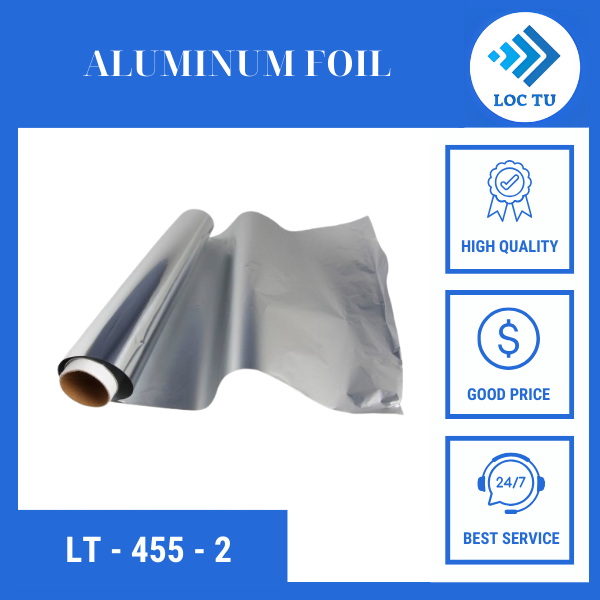
Scientific studies analyze aluminum leaching under controlled, worst-case scenarios.
4. Global Health Standards: The Regulatory Stance on Aluminum Foil in Cooking
The tolerable weekly intake levels for aluminum
Example Calculation: For a 70kg (154 lb) adult, the tolerable intake under the stricter EFSA standard is70 mg per week .
Comparing dietary intake with established safety limits
"Before" Analysis - Where does our daily aluminum come from? The vast majority of our aluminum intake comes from natural sources. It's present in drinking water, soil, and many foods like tea, spices, and some vegetables. The average dietary intake from these sources is estimated to be between 5-10 mg per day. "After" Analysis - How much does foil contribute? Even in a worst-case scenario (cooking a highly acidic meal), the amount of aluminum that might leach from foil is typically only a few milligrams. This is a very small fraction of both the average daily intake and the official tolerable weekly limit. Conclusion: For the vast majority of the population, the contribution frombest practices for cooking with foil is not significant enough to pose a health risk. The concern aboutaluminum and Alzheimer's remains a hypothesis that has not been proven, with major health bodies stating no causal link has been established through diet.
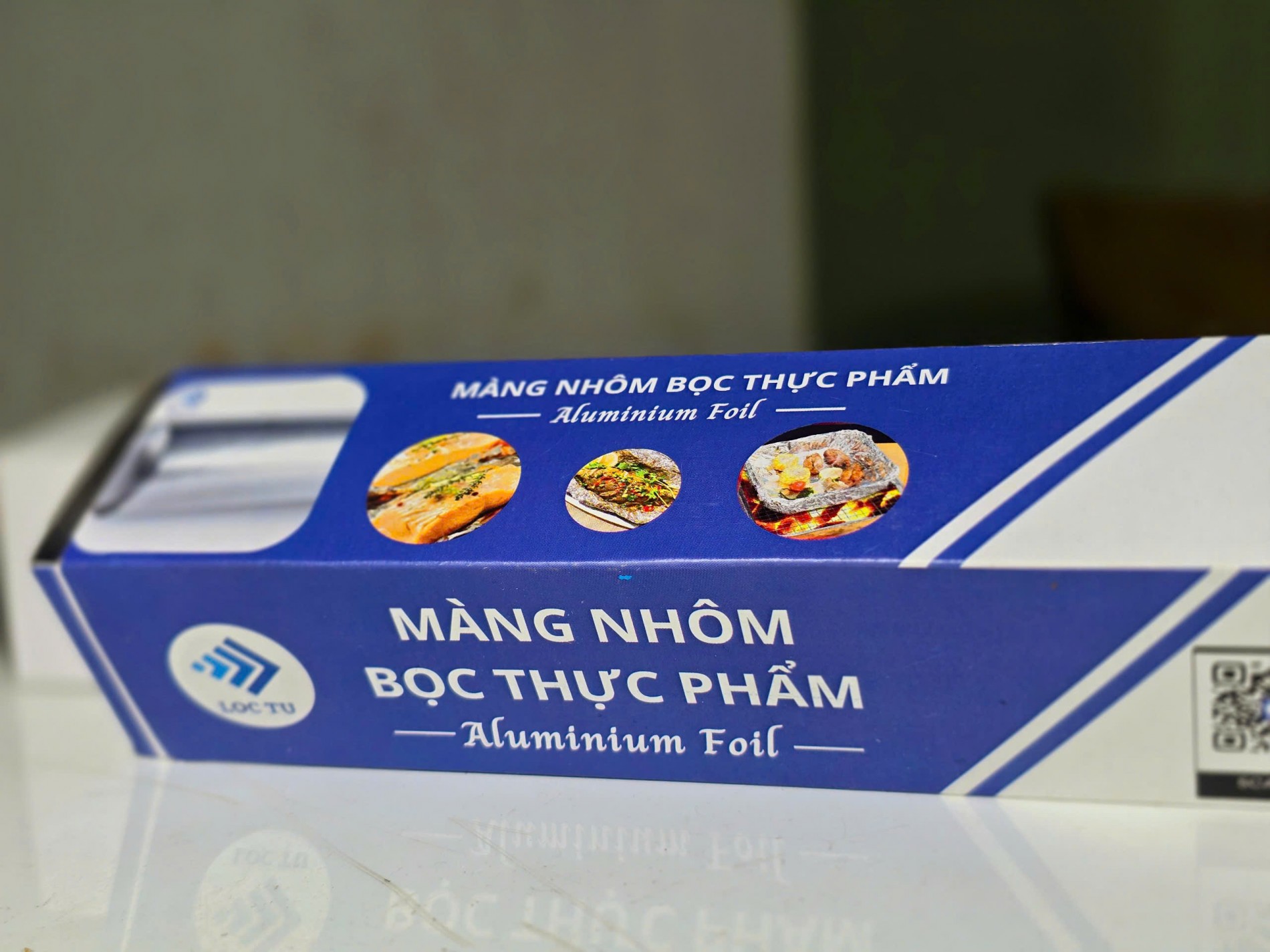
Putting it in perspective: The contribution from aluminum foil is very small compared to other sources and safety limits.
5. The Safety Protocol: Best Practices for Using Aluminum Foil in Cooking
A risk mitigation protocol for using aluminum foil in cooking
Step 1 - Procure Quality Material: Always purchase a high-quality,food grade aluminum foil from a trusted brand likeLoc Tu . This eliminates the risk of impurities.Step 2 - Assess Your Ingredients: Before using, identify if your recipe is highly acidic or salty.Step 3 - Implement "The Neutrality Rule": For neutral or low-acid foods (most meats, vegetables, pastries): Use without concern.For highly acidic/salty foods: Minimize contact time and temperature.
Step 4 - Create a Barrier (Advanced Technique): For dishes like tomato-based braises where you still want the benefits of foil, place a layer of parchment paper between the food and the foil. The parchment acts as an inert barrier.Step 5 - Avoid Abrasion: Do not use metal utensils to scrape food from the foil, which can scratch the surface.
A summary of the golden safety rules
Do not use for long-term storage of highly acidic or salty foods. Use glass or ceramic containers instead.Minimize high-heat cooking with these types of foods. A quick broil is less of a concern than a 3-hour braise in tomato sauce.Choose heavy-duty foil. It is more durable and less prone to tearing or flaking.Do not use in the microwave oven. (Unless specifically marked as microwave-safe).Following these best practices for cooking with foil is straightforward and effective.
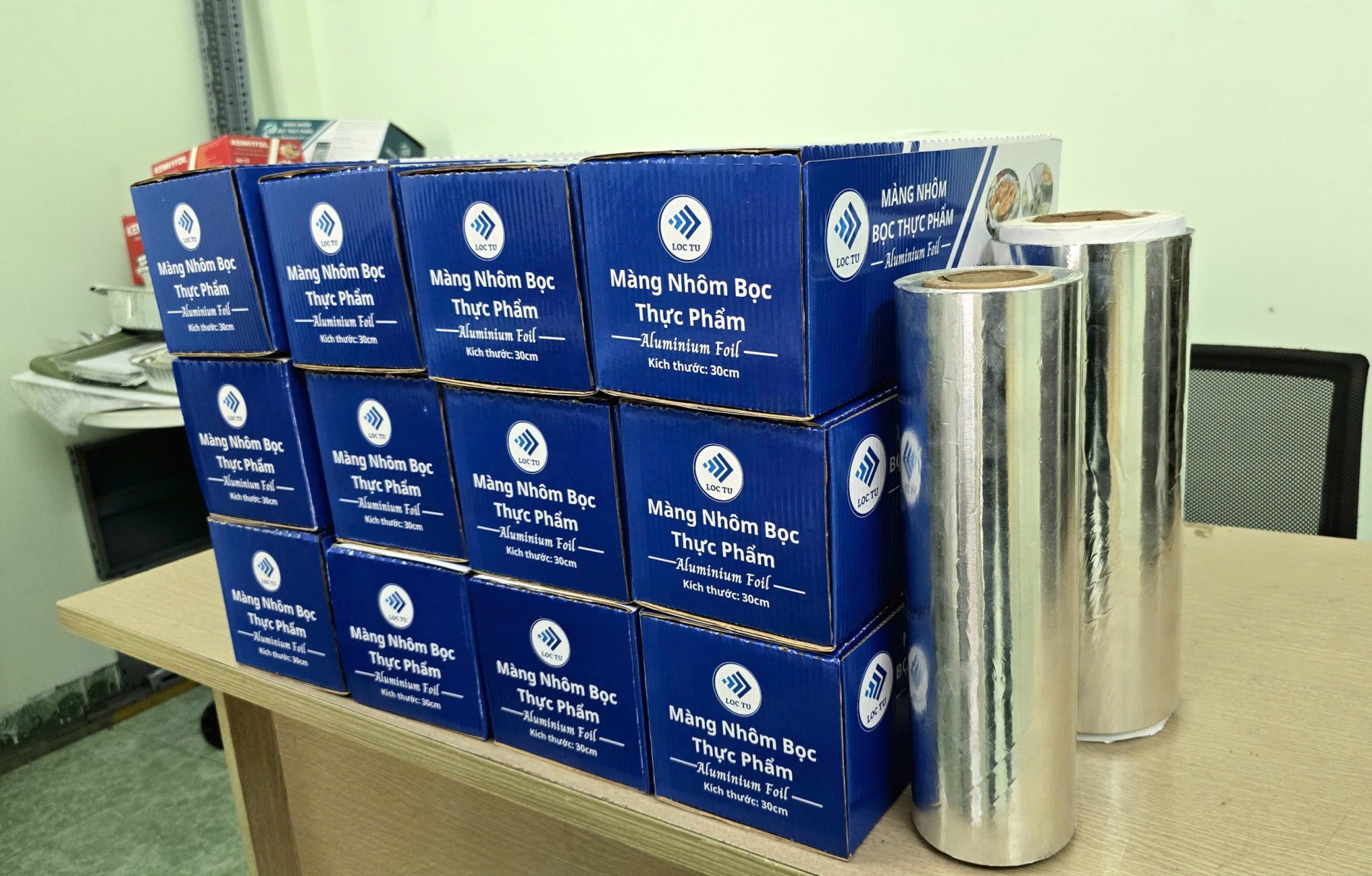
The barrier technique: Using parchment paper as a liner for highly acidic foods.
6. The Expert's Choice: Sourcing Certified Safe Aluminum Foil for Cooking
The critical role of a trusted supplier
The Scenario: A large-scale catering company needs to ensure absolute food safety across all its operations.The Challenge: They cannot individually test every roll of foil they use. They need to trust their supplier's quality control process implicitly.The Solution: They partner with areliable aluminum foil supplier like Loc Tu, who provides full documentation. This includes Certificates of Analysis for the raw material and proof of compliance with international food safety standards. This shifts the burden of verification from the user to the manufacturer, ensuring peace of mind.
Loc Tu's commitment to providing a safe product
The Myth: "All heavy-duty foil is the same."The Truth: 🧐What is aluminum foil made of is what truly matters. Two rolls can have the same thickness, but different levels of purity.The Loc Tu Commitment: Our promise extends beyond thickness. We guarantee that every roll ofLoc Tu aluminum foil is:Made from high-purity, virgin aluminum alloy. We eliminate the risks associated with uncertified recycled materials.Fully "Food Grade" Compliant. We adhere to both Vietnamese and international standards.Manufactured in a clean, certified facility. Our process minimizes any risk of contamination.
Is Aluminum Foil Safe for Cooking? A Data-Driven Conclusion
Loc Tu: Pioneering Excellence in Premium Aluminum Packaging Solutions
Why You Must Choose Loc Tu?
✅ Assured Quality & Safety: Crafted from premium, food-grade aluminum, free from harmful impurities, meeting international safety benchmarks.
🔥 Optimal Thermal Properties: Ensures even cooking and excellent heat retention, preserving food temperature and taste effectively.
💪 Durable & Convenient Design: Engineered to resist leaks and dents, providing reliable performance for baking, storage, and transport.
🔄 Versatile Solutions: Our extensive range caters to various applications – from baking and steaming to storing fresh food and takeaway meals.
🌱 Eco-Conscious Packaging: Made from 100% recyclable aluminum, supporting sustainability and reducing plastic waste.
🎯 Brand Enhancement: Optional custom printing available to personalize products and boost your brand visibility.
🚚 Reliable Supply & Delivery: Capable of handling large orders with dependable, on-schedule nationwide shipping.
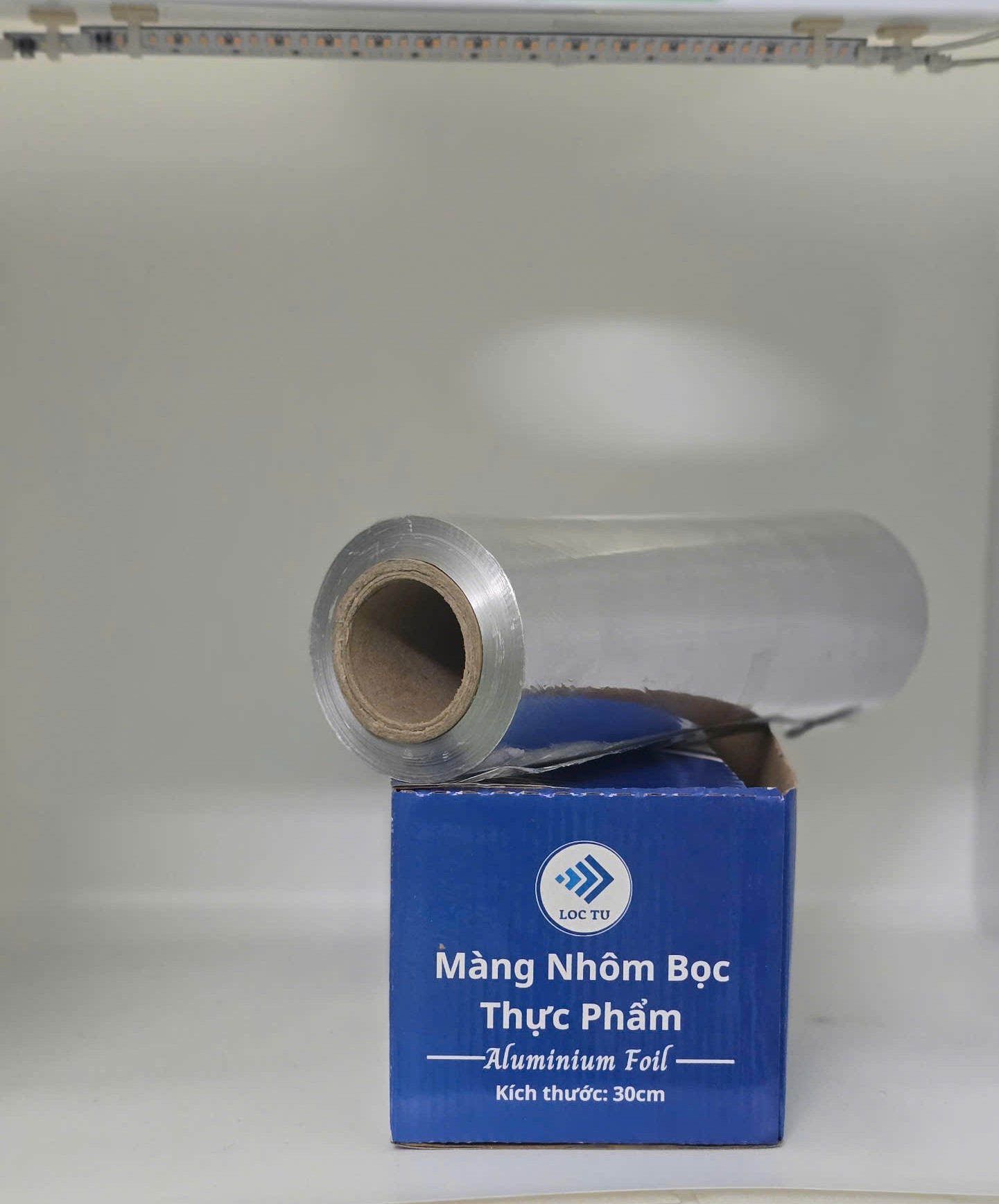
Loc Tu – Trusted Manufacturer of Durable Aluminum Foil Containers and High-Quality, Food-Safe Aluminum Foil Rolls for Your Kitchen
Your Trusted Partner in Food Packaging 📞
📌 LOC TU MANUFACTURING & TRADING CO., LTD
📌 Our Vietnamese Website: Khaynhomthucpham.com
📌 HOTLINE/ZALO: 0969.787.309
📌 Facebook: Aluminum Foil Loc Tu
📌 Youtube: Aluminum Foil Loc Tu
📌 Tik Tok: Aluminum Foil Loc Tu
📌 Instagram: Aluminum Foil Loc Tu
📌 Shopee: Aluminum Foil Loc Tu
📌 Twitter/X: Aluminum Foil Loc Tu
📌 LinkedIn: Aluminum Foil Loc Tu
📌 Pinterest: Aluminum Foil Loc Tu
📌 Tumblr: Aluminum Foil Loc Tu
📌 Threads: Aluminum Foil Loc Tu
📌 Telegram: Aluminum Foil Loc Tu
📌 Whatsapp: 0969.787.309
📌 Branch 1 (Hanoi): No. 1 Pham Tu, Beasky Building, Dai Kim Ward, Hoang Mai District, Hanoi
📌 Branch 2 (Binh Duong): No. 68, DX 051 Street, Group 17, Quarter 4, Phu My Ward, Thu Dau Mot City, Binh Duong Province
📞 Contact us today for expert consultation and the best pricing on premium aluminum trays and foil packaging solutions! 🚀
LOC TU PRODUCTION AND TRADING COMPANY LIMITED
Branch 1 (Binh Duong): No. 68, DX 051 Street, Group 17, Quarter 4, Phu My Ward, Thu Dau Mot City.
Branch 2 (Hanoi): No. 1 Pham Tu, Beasky Building, Dai Kim Ward, Hoang Mai District.
Hotline/Zalo: +84.969787309
Website: Khaynhomthucpham.com
Email: [email protected]